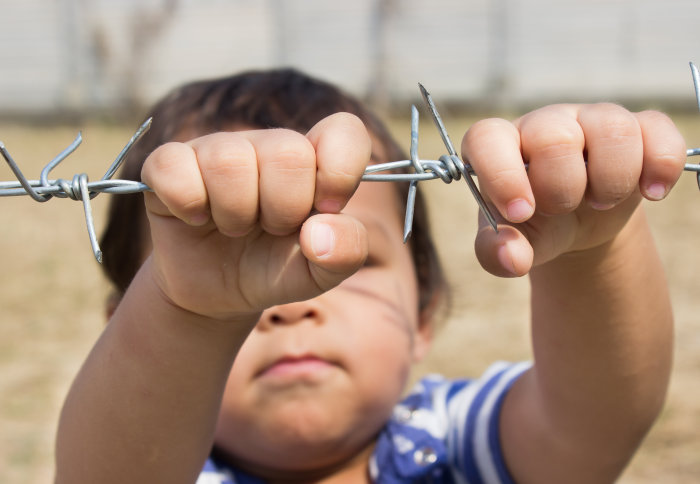Blast impact and cancer cuts: News from the College

Here’s a batch of fresh news and announcements from across Imperial.
From fresh insights into the impact of blast injuries on children, to a technological way to cut womb cancer wait times, here is some quick-read news from across the College.
Impact of child blast injuries revealed
 A new BMJ paper has outlined the effects of blast injuries on children compared to adults. The review, led by the Royal Army Medical Corps, showed that blasts kill children more readily than adults, mostly from head and burns trauma, but that children are less likely than adults to die from lower limb injury.
A new BMJ paper has outlined the effects of blast injuries on children compared to adults. The review, led by the Royal Army Medical Corps, showed that blasts kill children more readily than adults, mostly from head and burns trauma, but that children are less likely than adults to die from lower limb injury.
Children with blast injury place a disproportionate burden on healthcare systems, requiring longer, more complex surgical repair, and longer stays in both critical care and nursing wards.
Co-author Dr Emily Mayhew, of Imperial’s Centre for Blast Injury Studies, said: “Across the world, children bear the brunt of injuries from explosive weapons, either when they are used as part of a conflict, or afterwards by mines and shells left behind, which they discover as they play or go to school.
“Our review describes, for the first time, the true effects of childhood blast injury. We hope it’ll bring guidance for those who treat childhood blast injuries.”
Artificial photosynthesis boost
 Researchers would like to copy photosynthesis – using sunlight to initiate chemical reactions that store energy as ‘solar fuels’. Metal oxides are promising materials for this, but much of the energy from the sun is lost before it can be used to create reactions.
Researchers would like to copy photosynthesis – using sunlight to initiate chemical reactions that store energy as ‘solar fuels’. Metal oxides are promising materials for this, but much of the energy from the sun is lost before it can be used to create reactions.
Now, a research team led by Imperial has demonstrated that changes to the structure of the materials have a large impact on the loss of energy. Using fine-tuned ultrafast laser pulses they have shown that small structural deformations occur in the first fractions of a second after light strikes the material, causing the properties of the material to change.
The team suggest controlling these changes could improve the efficiency of the materials, allowing more energy to be converted to solar fuels via chemical reactions.
Read more in Nature Communications.
Intelligent design

A new, award-winning paper by Imperial academics has sketched out how to incorporate artificial intelligence into bespoke product design.
The paper outlines how, to get an idea of what their clients want, designers could measure clients’ brainwaves using electroencephalography (EEG), before applying artificially intelligent algorithms to translate them into computer visualisations of the desired product.
These visualisation would help them to design the exact brief the client wants. The concept works on an emerging branch of AI, known as ‘human-in-the-loop’, that uses both human and machine intelligence to create machine learning models.
Lead author Pan Wang, from Imperial's Dyson School of Design Engineering, said: “This could pave the way for a new, artificially intelligent approach to bespoke design.”
The paper won the Design Society Distinguished Paper Award at the International Conference on Engineering Design ICED2019.
Reducing cancer-diagnosis wait
 Combining iKnife technology with machine learning could help dramatically speed up the diagnosis of womb cancer.
Combining iKnife technology with machine learning could help dramatically speed up the diagnosis of womb cancer.
Endometrial cancer affects more than 9,000 women in the UK each year, with most having to wait around six weeks for a diagnosis (from first GP appointment).
Imperial researchers will aim to produce an immediate yes/no response on whether tissue biopsies are positive for the cancer. They hope the work, backed by £75,000 from charity The Eve Appeal, could ultimately reduce the anxious wait patients face for test results.
“Being referred for diagnostic tests for endometrial cancer is a very stressful time for any woman,” said Dr Sadaf Ghaem-Maghami, who will lead the work. “This could not only save anxiety inducing waits for the women who do not have cancer, but it will speed up the treatment pathway for those diagnosed.”
–
Want to be kept up to date on news at Imperial?
Sign up for our free quick-read daily e-newsletter, Imperial Today.

Article text (excluding photos or graphics) © Imperial College London.
Photos and graphics subject to third party copyright used with permission or © Imperial College London.
Reporter
Ryan O'Hare
Communications Division
Hayley Dunning
Communications Division
Caroline Brogan
Communications Division
Andrew Youngson
Communications Division